Healthy eating has never been easier, thanks to the food nutrition label. Most foods in the grocery store have a nutrition label and an ingredient list(How to Read Food Labels). Claims like “low cholesterol” and “fat-free” can be used only on a label if a food meets legal standards set by the government.
Reading the nutrition label can help you choose foods that make up a healthful diet. Eating a healthful diet can help reduce your risk factors for certain diseases. For example, too much-saturated fat and cholesterol can possibly raise blood cholesterol (a risk factor for heart disease). Too much sodium may be linked to high blood pressure. High blood pressure is a risk factor for heart attack and stroke. Being healthy daily is up to you. In addition to eating a balanced, nutritious diet daily also stay active, do not smoke, and watch your weight.
Here is a chart that provides some keywords and health claims on product labels, and what they mean as defined by the government.
For example:
| If a food claims to be… |
It means that one serving of the product contains… |
| Calorie free |
Less than 5 calories |
| Sugar free |
Less than 0.5 grams of sugar |
| Fat |
| Fat free |
Less than 0.5 grams of fat |
| Low fat |
3 grams of fat or less |
| Reduced fat or less fat |
At least 25 percent less fat than the regular product |
| Low in saturated fat |
1 gram of saturated fat or less, with not more than 15 percent of the calories coming from saturated fat |
| Lean |
Less than 10 grams of fat, 4.5 grams of saturated fat and 95 milligrams of cholesterol |
| Extra lean |
Less than 5 grams of fat, 2 grams of saturated fat and 95 milligrams of cholesterol |
| Light (lite) |
At least one-third fewer calories or no more than half the fat of the regular product, or no more than half the sodium of the regular product |
| Cholesterol |
| Cholesterol free |
Less than 2 milligrams of cholesterol and 2 grams (or less) of saturated fat |
| Low cholesterol |
20 or fewer milligrams of cholesterol and 2 grams or less of saturated fat |
| Reduced cholesterol |
At least 25 percent less cholesterol than the regular product and 2 grams or less of saturated fat |
| Sodium |
| Sodium free or no sodium |
Less than 5 milligrams of sodium and no sodium chloride in ingredients |
| Very low sodium |
35 milligrams or less of sodium |
| Low sodium |
140 milligrams or less of sodium |
| Reduced or less sodium |
At least 25 percent less sodium than the regular product |
| Fiber |
| High fiber |
5 grams or more of fiber |
| Good source of fiber |
2.5 to 4.9 grams of fiber |
If you can’t remember the definitions of all of the terms, use these general guidelines instead:
- “Free” means the food has the least possible amount of the specified nutrient.
- “Very Low” and “Low” mean the food has a little more than foods labeled “Free.”
- “Reduced” or “Less” means the food has 25 percent less of a specific nutrient than the regular version of the food.
Here are a few more tips for getting as much health information as possible from the Nutrition Facts label:
- Remember that the information shown in these panels is based on 2,000 calories a day. You may need to consume less or more than 2,000 calories depending upon your age, gender, activity level, and whether you’re trying to lose, gain or maintain your weight.
- In general, as you think about the number of calories in a food per serving, remember that for a 2,000-calorie diet:
40 calories per serving are considered low;
100 calories per serving are considered moderate; and
400 calories or more per serving is considered high.
- When the Nutrition Facts label says a food contains “0 g” of trans fat, but includes “partially hydrogenated oil” in the ingredient list, it means the food contains trans fat, but less than 0.5 grams of trans fat per serving. So, if you eat more than one serving, you could quickly reach your daily limit of trans fat. Be careful!




Diabetic Snack Ideas
Having diabetes does not mean that you must stop eating snacks. It does mean that you should know what a snack can do to your blood sugar. You also need to know what healthy snacks are. The best snacks (Diabetic Snack Ideas) for type 2 diabetes have no added sugar and combine protein and healthy fats with high–quality carbohydrates which is an ideal mix for keeping hunger at bay and blood sugar levels consistent. Snacks with no carbohydrates change your blood sugar & glucose tests the least. The healthiest snacks usually do not have many calories.
Read more
Diabetes Testing Supplies: New Study Regarding Cinnamon Usage Released
The Annals of Family Medicine published the results of an attention-grabbing study on type 2 diabetes. The study was conducted by representatives of California’s Western University of Health Sciences. What the California researchers’ work revealed may startle you.
Read more
Cats Can Get Diabetes Too… Known As Feline Diabetes
Cats are one of the most popular pets in American homes these days. They’re very loving pets and capable of providing you with years of companionship. Just like any other animal or pet for that matter, cats sometimes get sick (Diabetes in Animals). There are several different types of ailments that cats get and one of those is diabetes. Yes, cats can also have diabetes. Also known as “Feline diabetes”, but Diabetes nonetheless is a serious disease in cats just as it is in humans, although it can be treated by a veterinarian.
Read more
Can Coffee Help Reduce The Risk Of Diabetes?
Diabetes is a disease in which the body does not produce or properly use insulin. Insulin is a hormone that is needed to convert sugar (glucose), starches and other food into energy that we need to live our daily life. The cause of diabetes continues to be a puzzle, although researchers know that both genetics and factors such as obesity and lack of exercise appear to play vital roles.
Read more
5 Tips For Traveling With Diabetes Supplies
Although you’d like to forget about your diabetes while you’re on vacation, you actually need to spend a little bit of extra time making sure that you stay healthy while you’re traveling (Traveling with Diabetes Supplies).
Read more
Probiotics? What Are They?
Probiotics (Probiotics for Diabetics) are beneficial forms of gut bacteria that help maintain the natural balance of organisms (microflora) in the intestines. They help stimulate the natural digestive juices and enzymes that keep our digestive organs functioning properly. The normal human digestive tract contains about 400 types of probiotic bacteria that reduce the growth of harmful bacteria and promote a healthy digestive system. The largest group of probiotic bacteria in the intestine is lactic acid bacteria, of whichLactobacillus acidophilus, is found in yogurt with live cultures. Yeast is also a probiotic substance. You can support your probiotic intake by eating foods that are a host to these live bacteria.
Read more
The Appealing Avocado
Avocado History: On May 15, 1915, in the posh new Hotel Alexandria in Los Angeles, a cadre of California farmers gathered to decide the fate of a new crop. The ahuacate, a pebbly-skinned, pear-shaped fruit, had been a staple food in Mexico, and Central and South America since 500 B.C. In the 16th century, Spanish conquistadors fell in love with the fruit after observing its prized status among the Aztecs. Until the early 1900s, this fruit had never been grown commercially in the United States. Is Avocado Good For Diabetics? Read more
Type 1 Diabetes Testing And Healthy Living May Help Kids Maintain Weight
Read more
Iron In The Diet
Iron is a mineral found in every cell of the body. Iron is considered an essential mineral because it is needed to make part of blood cells. The human body needs iron (Iron Supplements For Diabetics) to make the oxygen-carrying proteins hemoglobin and myoglobin. Hemoglobin is found in red blood cells and myoglobin is found in muscles.
Read more
Terms On A Food Label: What Do They Mean?
Healthy eating has never been easier, thanks to the food nutrition label. Most foods in the grocery store have a nutrition label and an ingredient list(How to Read Food Labels). Claims like “low cholesterol” and “fat-free” can be used only on a label if a food meets legal standards set by the government.
Reading the nutrition label can help you choose foods that make up a healthful diet. Eating a healthful diet can help reduce your risk factors for certain diseases. For example, too much-saturated fat and cholesterol can possibly raise blood cholesterol (a risk factor for heart disease). Too much sodium may be linked to high blood pressure. High blood pressure is a risk factor for heart attack and stroke. Being healthy daily is up to you. In addition to eating a balanced, nutritious diet daily also stay active, do not smoke, and watch your weight.
Here is a chart that provides some keywords and health claims on product labels, and what they mean as defined by the government.
For example:
If you can’t remember the definitions of all of the terms, use these general guidelines instead:
Here are a few more tips for getting as much health information as possible from the Nutrition Facts label:
40 calories per serving are considered low;
100 calories per serving are considered moderate; and
400 calories or more per serving is considered high.